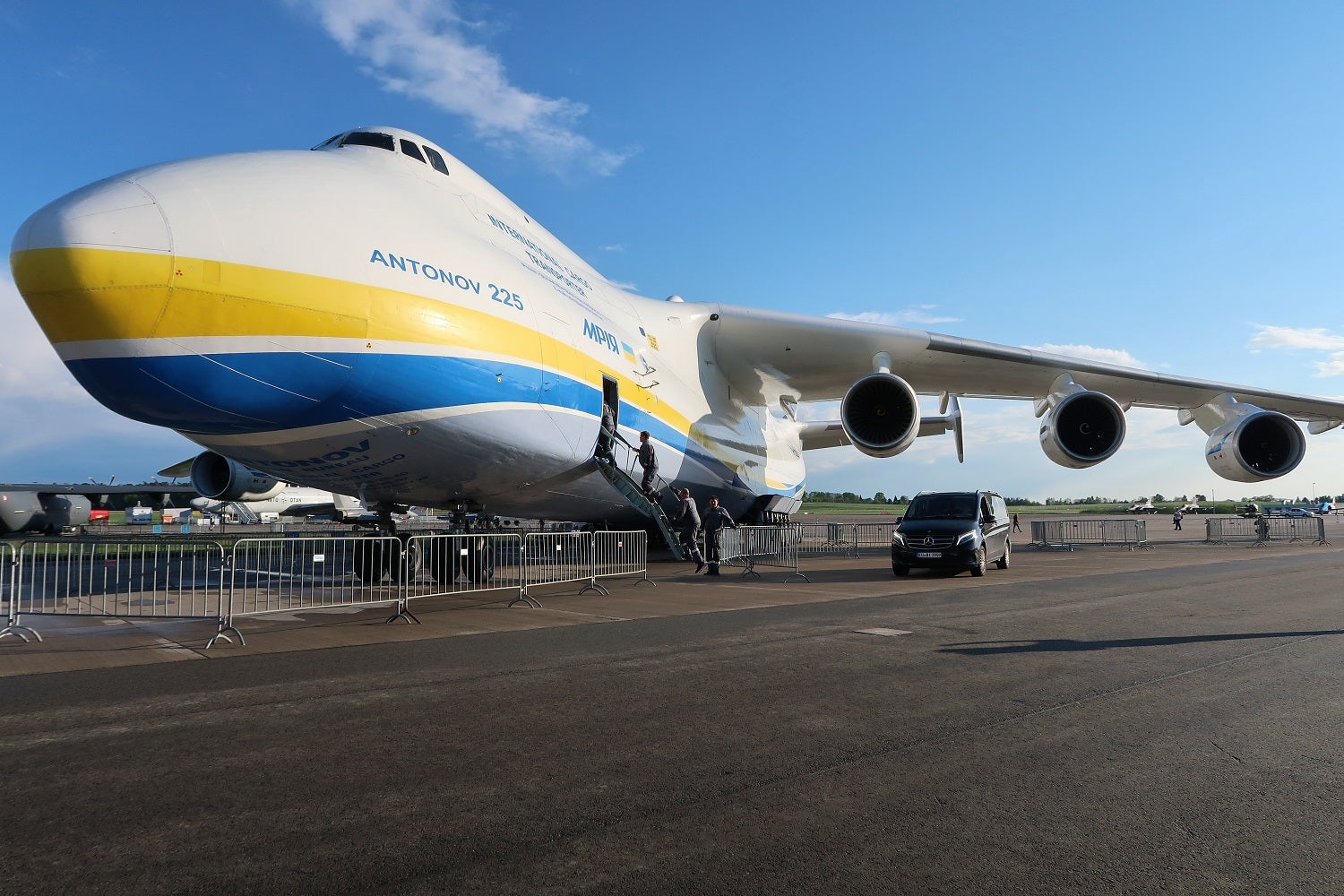A Tour Inside the Largest Operating Aircraft in the World — the Antonov An-225
Anyone who's seen an Airbus A380 knows how ridiculously large it is. Certified to carry up to 868 passengers across two decks, the aircraft stretches 80 meters (262 feet) from wingtip to wingtip and 73 meters (239 feet) from nose to tail. But, did you know that there's an even larger aircraft lumbering through the skies?
The Antonov An-225 cargo lifter is truly one of a kind; indeed, there was only one ever built. Originally built by the Soviets to carry their space shuttle, the gargantuan aircraft is now operated by Ukrainian-based Antonov Airlines for charter cargo flights.
Being the only aircraft of its type, few have even seen the beast. Fewer have gotten to see it on the ground. Even fewer have had the chance to see inside her. But, thanks to the An-225's surprise last-minute appearance at ILA Berlin, we got a chance to explore the one-of-a-kind cargo transporter in detail.
First, let's talk about the outside. The aircraft stretches 88.4 meters (290 feet) from wingtip to wingtip and 84 meters (276 feet) from nose to tail. That's 8.4 meters (22.5 feet) wider than Airbus' A380.
The aircraft is powered by six Ivchenko Progress D-18T turbofan engines — three on each side.
It's not just the wings that are massive; the horizontal stabilizer itself is 32.65 meters wide (107 feet). For reference, the Airbus A320 family has a wingspan of 35.8 meters (117 feet) — just narrowly larger than the An-225's horizontal stabilizer.
In order to load cargo, the massive nose opens upward and a tongue-like cargo loading ramp unfurls. Here's that 7+-minute process sped up and in reverse:
Only one part of this process is done manually: unfolding the last bit of the ramp:
For cargo that can't be rolled in, the cargo bay has two cranes each capable of lifting 10 tons at a time. With supplementary equipment, the crew can load up to 30 tons of non-mobile cargo at once.

Inside, the massive cargo bay measures 43.32 meters (142 feet) long by 6.4 meters (21 feet) wide by 4.4 meters (14.4 feet) tall, for an impressive volume of almost 1,300 cubic meters / 45,000 cubic feet / 34,000 gallons. To give you an aviation scale of just how long this cargo bay is, the Wright brothers' first-ever flight (120 feet) is shorter than this cargo bay.
The gear consists of 32 wheels: 28 in the main gear as seven rows of four.
With four wheels in the nose gear.
And, with that many wheels and being the only aircraft of its type, Antonov Airlines makes sure to carry spare wheels. During its visit to ILA Berlin, it had five spares on board.
Wondering about that America West decal? There are a lot of decals slapped onto any flat metal surface.
As it's not intended for passengers, there aren't many windows on the cargo bay. There's only four strategically placed portholes to allow visual inspection of the wings and engines during flight.
With the main deck dedicated to the cargo bay, you have to climb a ladder to get up into the cockpit.
While it's an incredibly impressive machine, the An-225 doesn't exactly have a modern cockpit.
Spherical Image - RICOH THETA
Six cockpit crew are required to operate the behemoth: two pilots and four engineers.
As on many aircraft, the pilots steer by yoke.
But, there aren't many cockpits with six thrust levers!
Of course, I couldn't pass up the opportunity to take a photo at the controls.
In a cabin behind the cockpit, pilots and flight crew have six bunks for rest. There are two mini-cabins with two stationary bunks and one bunk that can fold down over a table.
While there's a crew of six that are required in the cockpit, there are even more crew that are needed to operate this cargo transporter. In total, 19 or 20 crew members travel full-time with the An-225.
Those non-flight crew members have a dedicated cabin and rest area accessible through a tight staircase in the tail.
Inside, there are 20 economy-style crew seats arranged in a 2-3 seating arrangement.
The pitch is a tight 30 inches.
There are 12 bunks for crew in a cabin forward from the seats.
The pilot rest area is separated from the crew rest area by an avionics bay, meaning the only way to get from this crew area to the cockpit is to go down through the cargo bay.
Soon, the An-225's reign as the world's-largest operating aircraft will come to an end. The six-turbine 385-foot wide Stratolaunch is expected to take its first flight this summer. However, the An-225 will still be first in cargo capacity... and in the hearts of so many AvGeeks.
A thank you to Antonov Airlines representative Andriy Blagovisniy and flight manager Eugene Kiva for allowing an all-access tour of this amazing aircraft.
